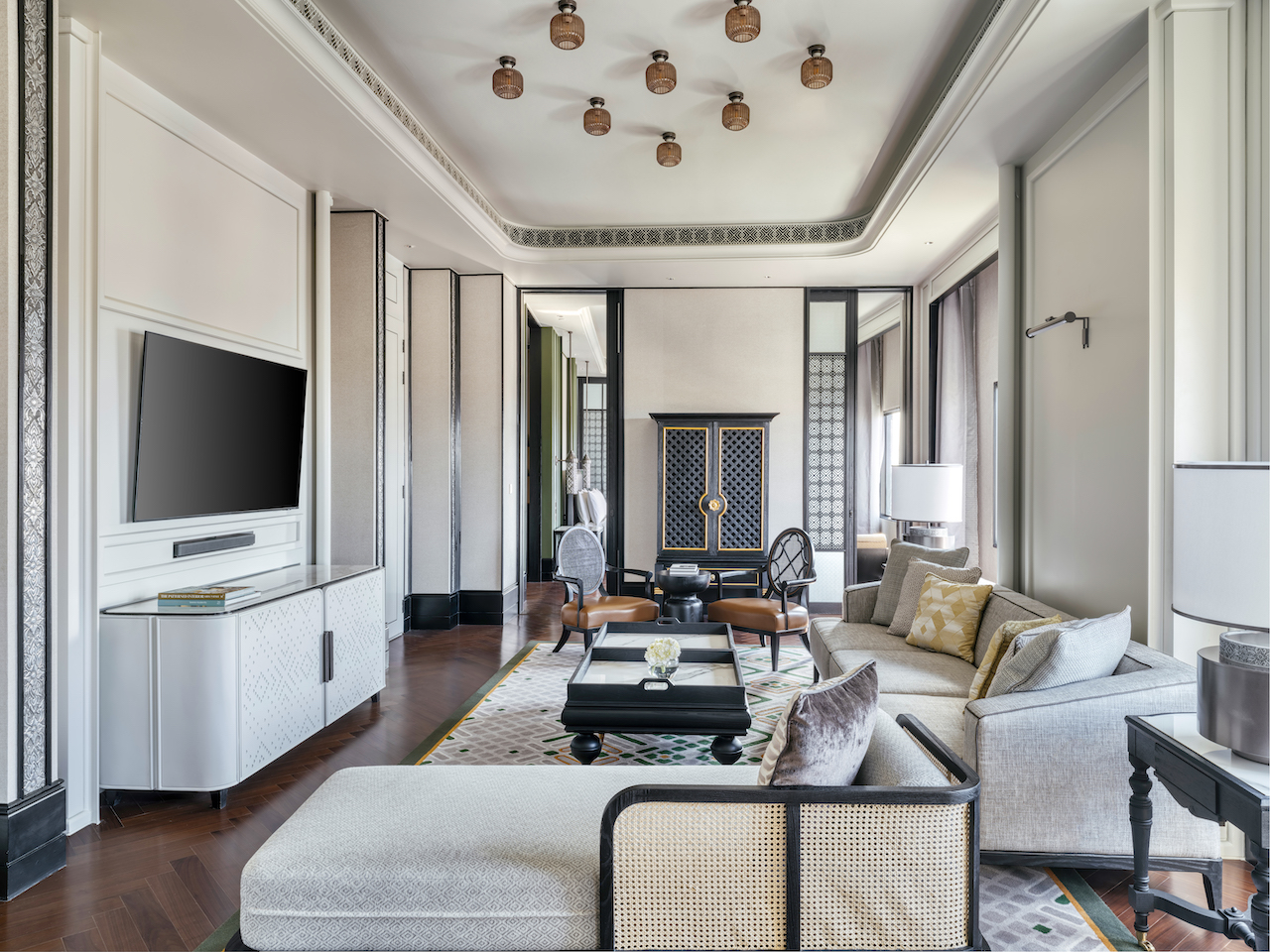
The newly opened InterContinental Chiang Mai The Mae Ping is set to redefine the city's luxury hotel landscape. The property’s sophisticated design unlocks a window into the past, showcasing the architectural and artistic heritage of the historic Lanna Kingdom. The rectangular-shaped fortified city of Chiang Mai was established in AD1296 as the capital of the Lanna Kingdom. Today, remnants of the brick-walls and gateway can still be seen in the 700-year-old city. For centuries, Chiang Mai has been well-known for its craft practices including lacquerware, silverwork, wood carving, pottery and more.
The owners of the 30-year-old Imperial Mae Ping Hotel entrusted Bangkok-based PIA with a complete overhaul of the property and to weave in elements of the city’s past. After five years of renovation works, it reopened in November 2023 as InterContinental Chiang Mai The Mae Ping.
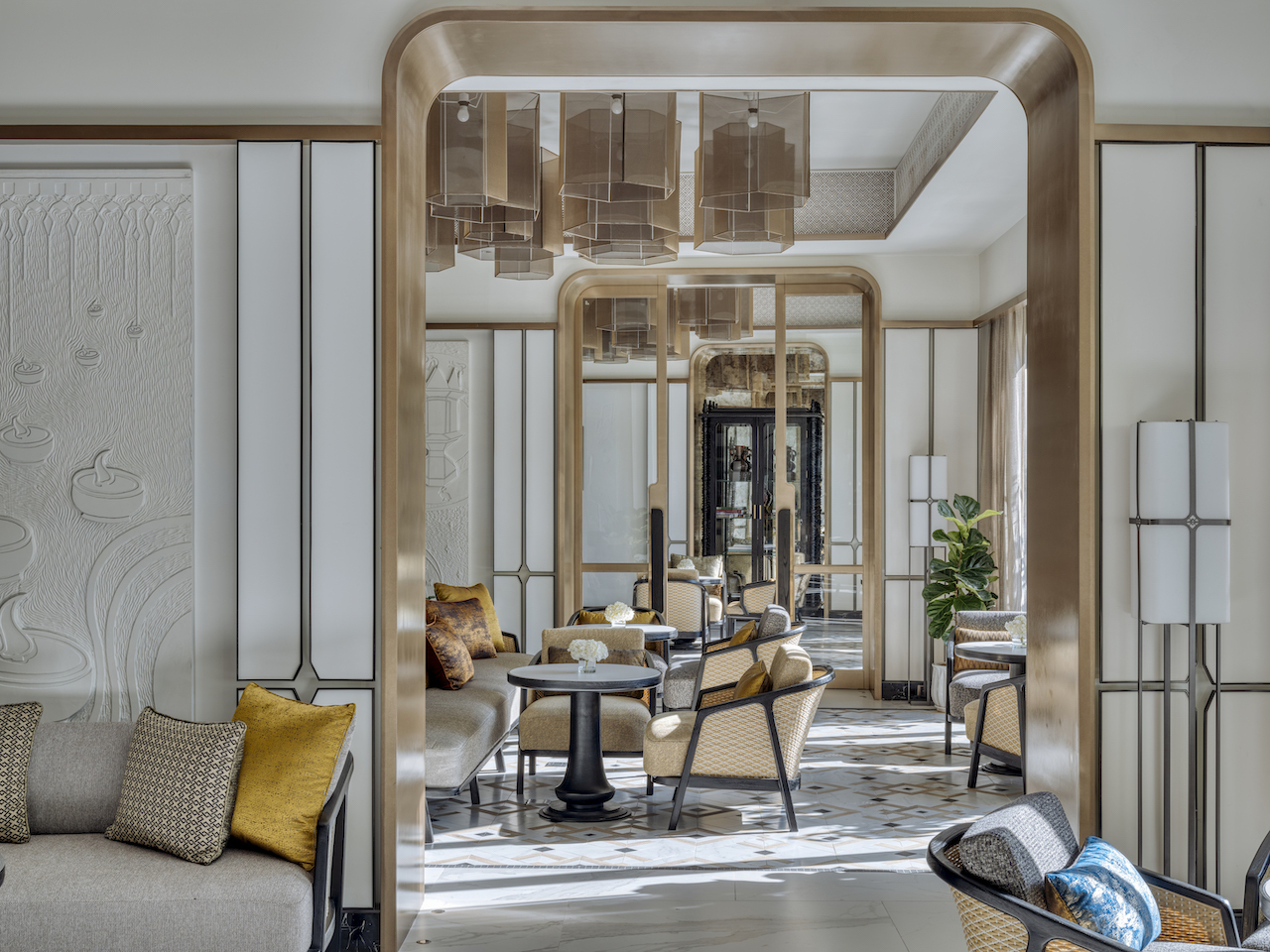 The elegant Kam Lobby Lounge overlooks the hotel’s main pool.
The elegant Kam Lobby Lounge overlooks the hotel’s main pool.
The building’s original space was carefully maximised to fulfill the design vision. The former lobby was converted into a capacious all-day dining restaurant called The Gad Lanna. Meanwhile, the former all-day dining was turned into the lobby lounge. The first floor car park was transformed into a group check in-lobby and the second floor void area to meeting rooms.
By 2025, there will be a contemporary extension ocated on the west wing of the lobby. This will be home to the signature Club InterContinental lounge and Club rooms and suites. Hong’s Chinese Restaurant on the 16th floor is slated to be completed in March 2024, and Hong's Sky Bar the following month.
Connecting Heritage with the Present and Future
For the design concept, it was important for the PIA team to create a contemporary look that celebrates Lanna craftsmanship. The designers thoughtfully fused modern conveniences and aesthetics into the property's historic structure.
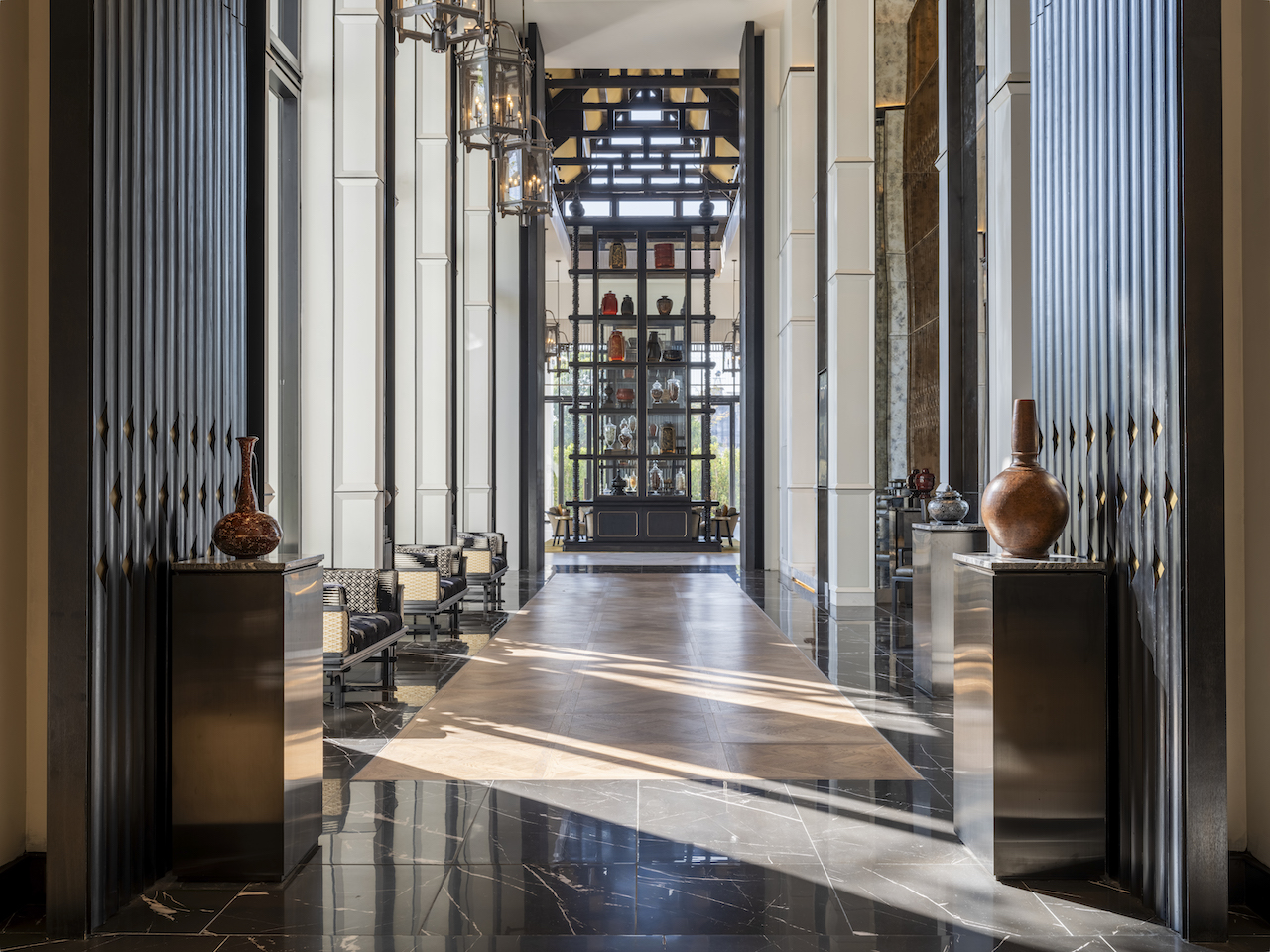
The main challenge for them was staying true to the traditions and history of Lanna culture in every detail and design. To ensure this, the PIA team had to present an inspired interpretation of the Lanna Kingdom through interior design. This means immersing guests into the Lanna culture and providing the best hotel functionality. They also had to take into consideration the existing site’s structural limitations such as ceiling height and original columns as well as integrate their designs into the building’s frame in the best way possible.
The hotel invites guests to experience various aspects of the rich culture as they move between the zones. Inspired by the monumental Lanna Government Quarters (the former Chiang Mai British consulate), the lobby, the Lobby Lounge, and the Club Lounge form the core of the hotel. Greeting guests at the hotel's main entrance is a rammed-earth wall that evokes the clay wall of Lanna. Earthy tones with hints of deep red and burnt orange hues reference the Vieng Gate, the first wall built to fortify the city.
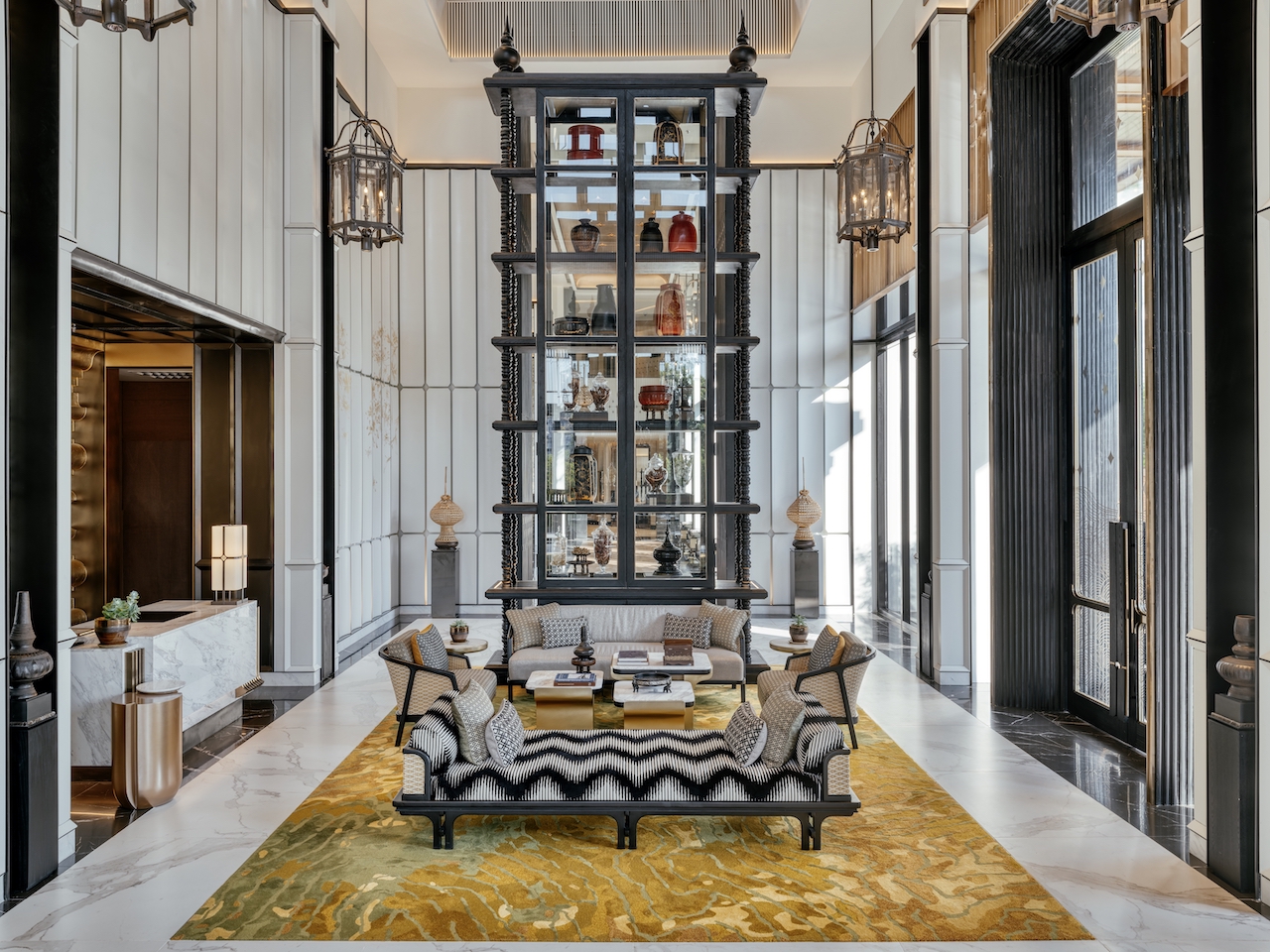 A highlight in the lobby are two massive teak cabinets displaying antiques.
A highlight in the lobby are two massive teak cabinets displaying antiques.
The new lobby, boasting lofty 8m ceilings, is flanked by two colossal 6m cabinets/shelves displaying artefacts and antiques. Decorated with lounge sofas and statement furniture pieces, the intricately layered area mimics the ambience of a classic drawing room used for entertainment, and speaks of Lanna’s teak trade. Beautiful Northern Thai orchids are elegantly hand painted on teak wood veneer panels near the reception area.
A shimmering gold tone adorns the wall behind the reception desk. “The backdrop is made from gold leaf which is often seen in temples or spiritual places. Lanna people use gold leaf to decorate Buddha statues as a sign of respect,” says Rujiraporn ‘PIA’ Wanglee, Founder and President of PIA.
She adds that the wall moulding is often seen in Lanna architecture – from pagodas and houses to government buildings. “Gold leaf has a good meaning in Lanna culture, so we try to merge this element (on the wall) to be the guest's first impression,” she adds.
In the guest lifts, the same gold leaf is used, and decorated with white floral motifs. “The pattern is known as 'hum yon' or the wooden guardian for Lanna people,” Rujiraporn points out. The doors of Lanna homes are decorated with this patterned wood carving because the locals “believe that this wooden guardian protects them from external bad elements,” she adds.
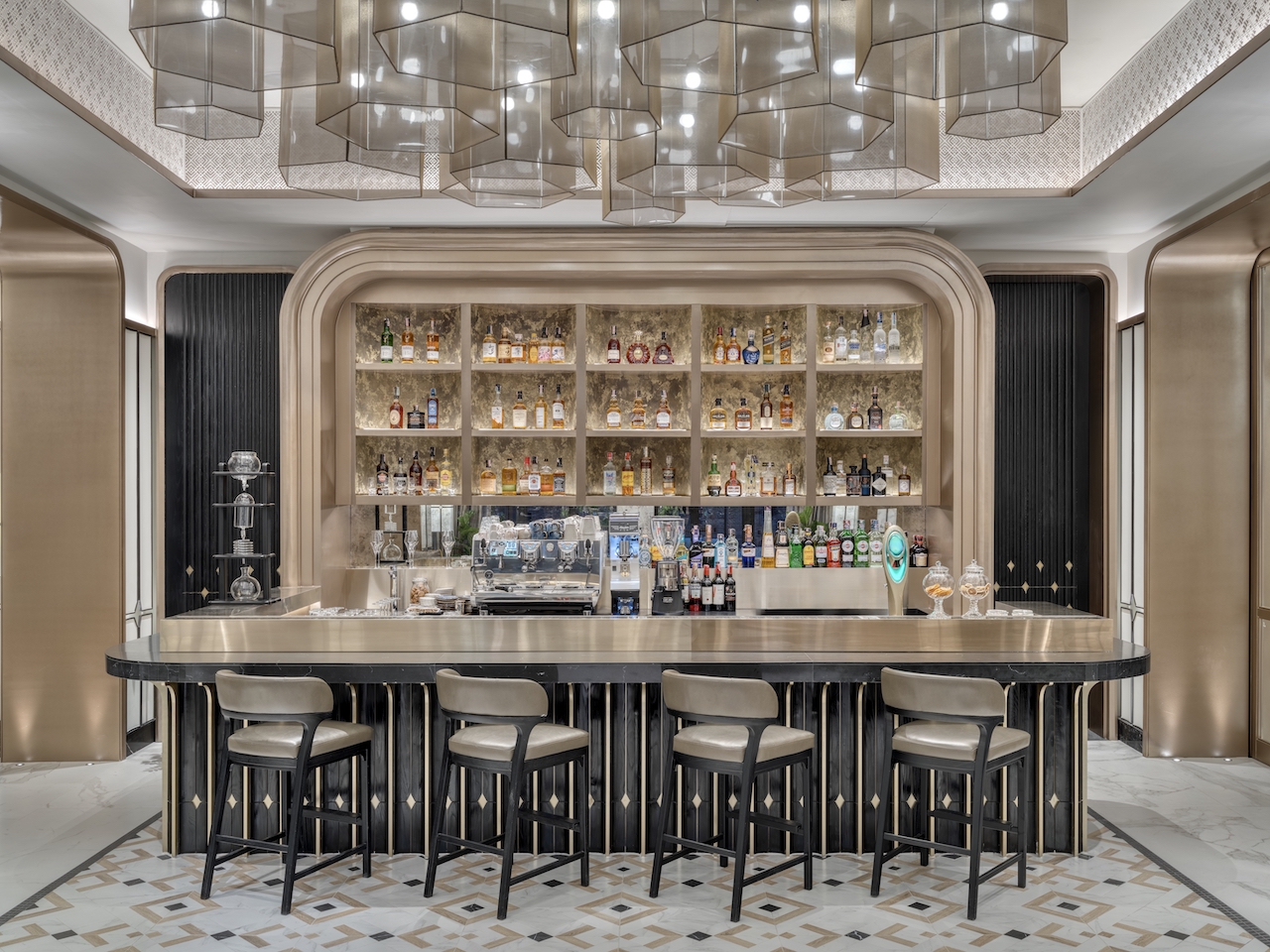 The sophisticated bar area is illuminated with lanterns inspired by the ‘Yi Peng’ floating lantern festival.
The sophisticated bar area is illuminated with lanterns inspired by the ‘Yi Peng’ floating lantern festival.
Meanwhile, the adjacent light-filled Kam Lobby Lounge overlooking the hotel’s main pool offers an ode to the ‘Yi Peng’ floating lantern festival through the use of large ‘lanterns’. The contemporary version of the sky lanterns or ‘khomloy’ illuminate the space with a warm, soothing glow. These lanterns are also hung on the enormous banyan trees at the lawn area.
Northern influences are evident in the restaurant’s design too. Gad Lanna restaurant’s interior is inspired by Chiang Mai’s bustling Warorot market where local food and goods have been traded since ancient times. The airy dining room in neutral tones of light brown and grey is decked with antique pottery and vases.
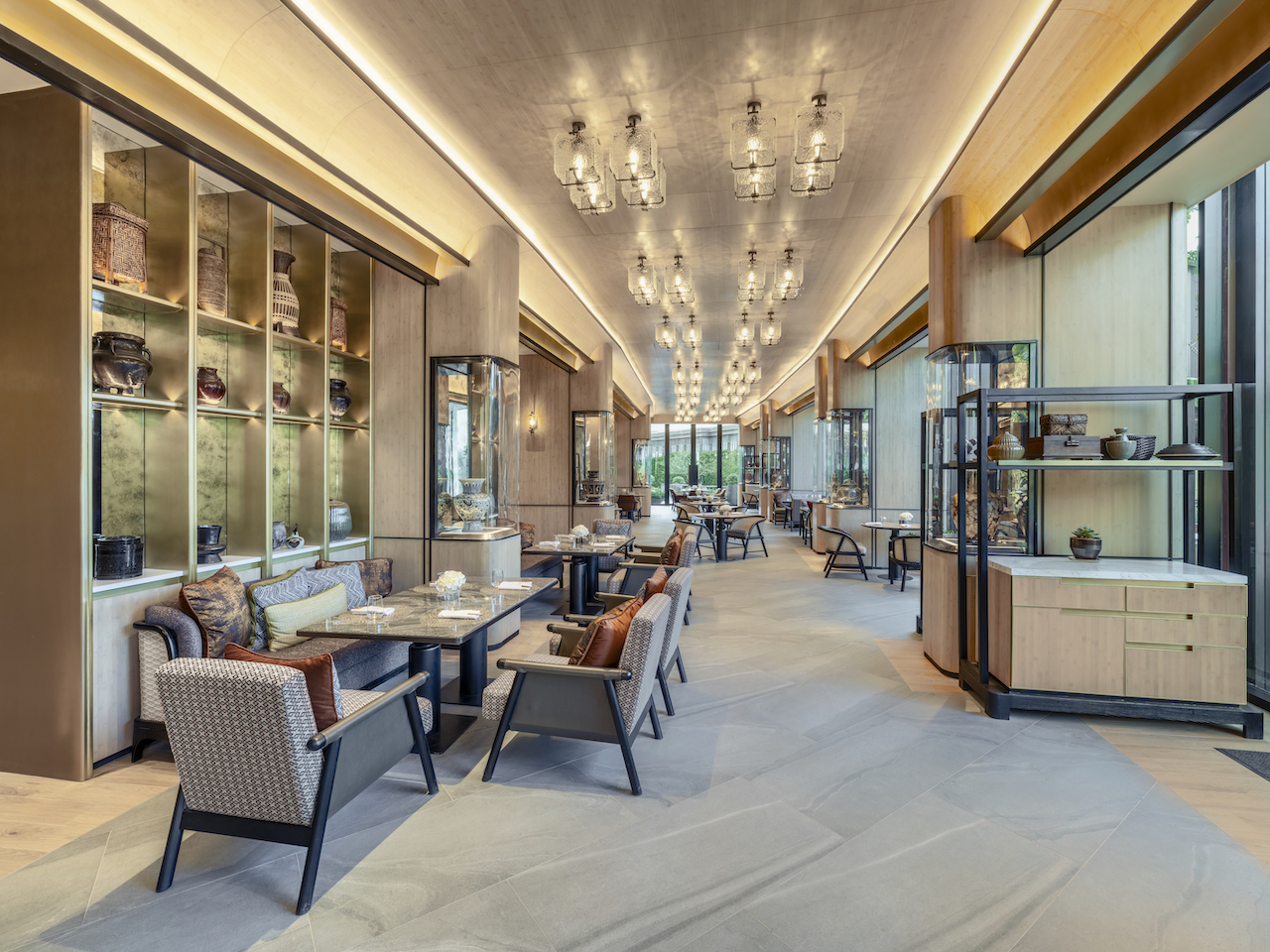 Gad Lanna restaurant’s light filled interior is inspired by Chiang Mai’s bustling Warorot market
Gad Lanna restaurant’s light filled interior is inspired by Chiang Mai’s bustling Warorot market
The spacious guest rooms either overlook the old town or the scenic Doi Suthep mountain. Each of the 240 elegant rooms and suites feature Lanna-inspired décor with bespoke finishes using traditional techniques ranging from lacquering, wood carving and sculptures to metal beating. Natural materials such as stone and wood bring rich tactility. To lend a modern touch, contemporary art pieces commissioned from local artists celebrate Chiang Mai’s status as Thailand’s burgeoning creative capital.
Sourcing Locally
All the artwork and sculptures in the hotel are not just decorative but are products of local craftmanship. PIA’s team carefully selected each art piece from original artisan heirs in various artisan villages.
In terms of furniture and fixture design, the design team modernised and drew inspiration from Lanna wooden furniture. “Wood turning elements are a signature feature throughout the entire property. The profiles closely resemble the remaining antique furniture in Lanna customs. Wooden benches were developed from traditional designs, incorporating modern textiles and upholstery,” says Rujiraporn.
She continues: “It is rare to find a hotel and museum in the same place. In every square meter of the property, we have designed with respect and inspiration from history. We extensively studied Lanna living, including their community, festivals, culture, beliefs, cuisine, and customs.”
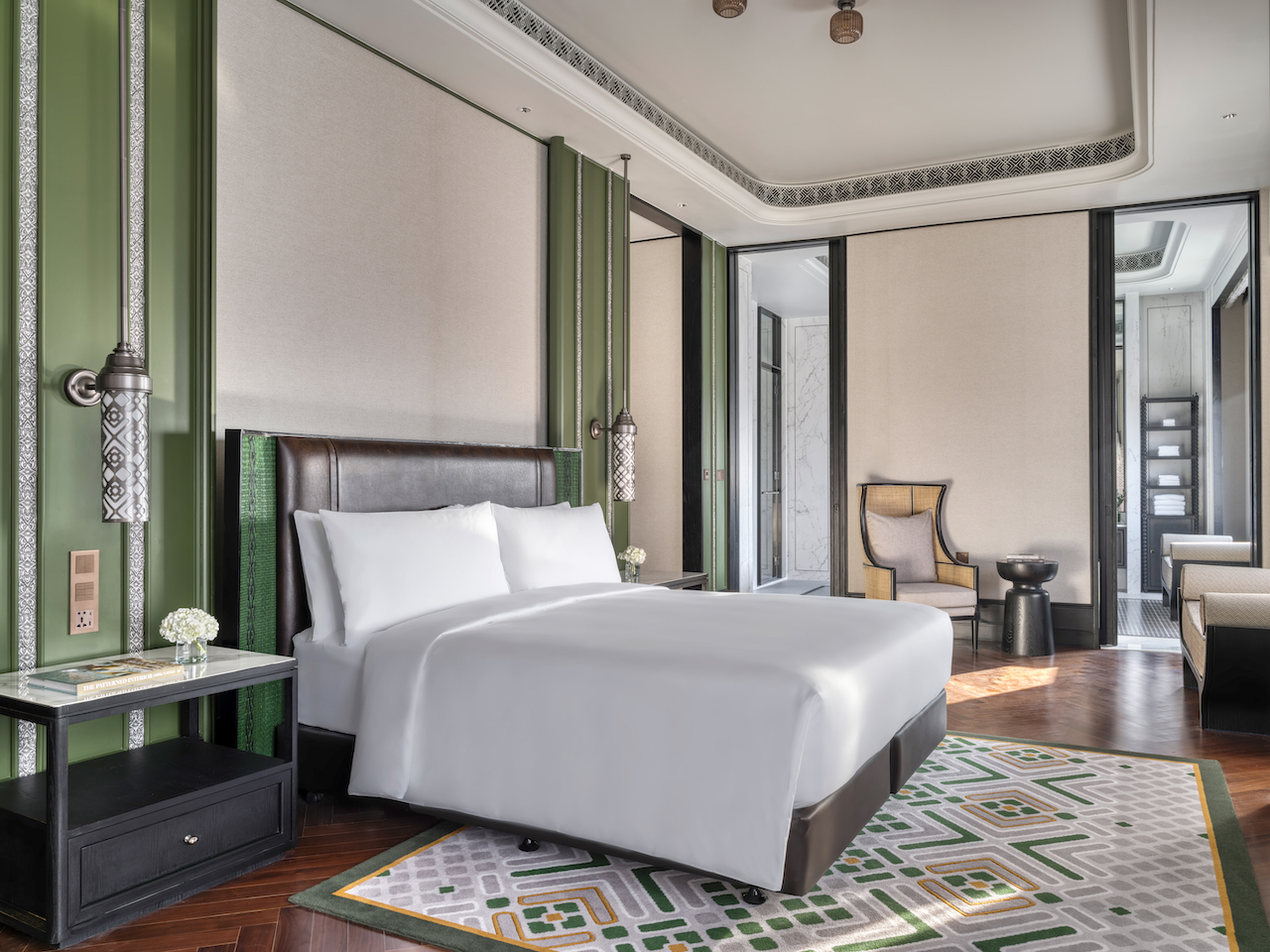 The Presidential Suite also features Lanna-inspired décor with bespoke finishes using traditional techniques such as wood carving and metal beating.
The Presidential Suite also features Lanna-inspired décor with bespoke finishes using traditional techniques such as wood carving and metal beating.
As for the usage of colours, Rujiraporn explains, “Approximately, 50% of the colours used were white, which we interpret as a vast canvas. Grey and black accents added depth to the space. Gold represented the glorious period of Lanna. Green, blue, and brown were used to show respect to the Lanna mural paintings. Lanna’s ancient use of natural products influenced our colour palette, such as green leaves, brown for the soil, and red from the trees sap. Regarding wood tones, we utilised bamboo, a local plant.”
Paying Respect
To further enhance the storied hotel’s prominent position, the PIA team created a tranquil lawn overlooking a 600-year-old Buddhist stupa (Wat Chang Khong). This building featuring plaster and carved wood decoration dates back to more than a hundred years.
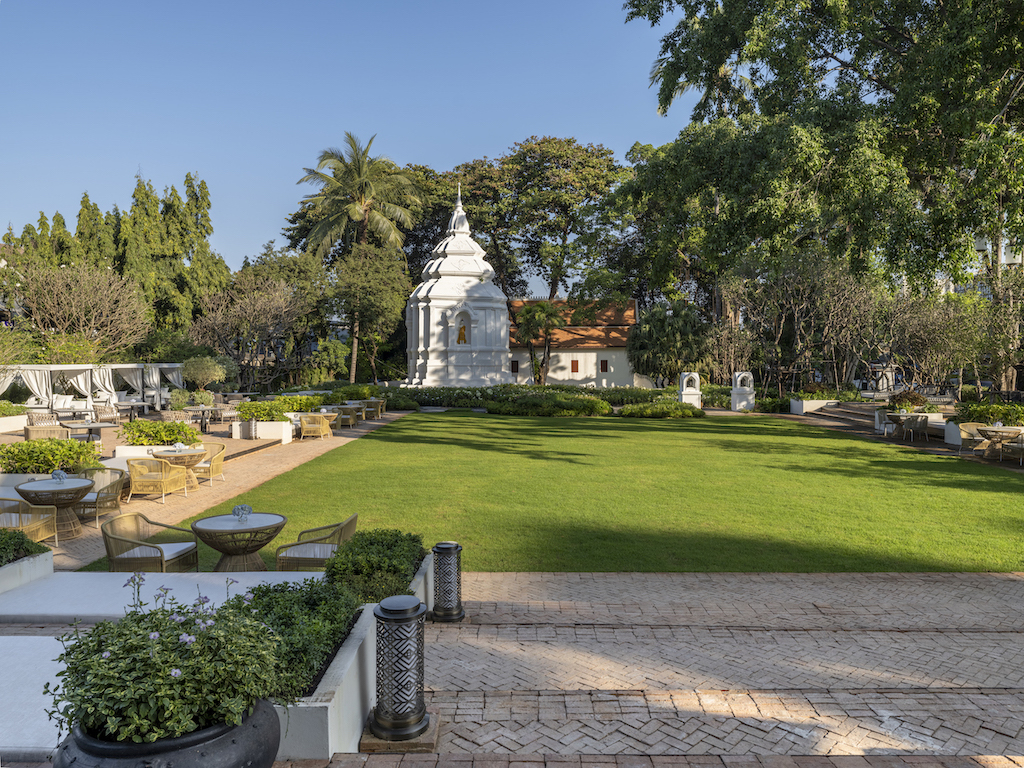 The hotel’s lush lawn overlooks Wat Chang Khong, the 600-year-old Buddhist stupa.
The hotel’s lush lawn overlooks Wat Chang Khong, the 600-year-old Buddhist stupa.
In the last three decades, the former Imperial Mae Ping had helped to keep the grounds clean and tidy. During the renovation, the hotel team worked with the city’s Fine Art Department to revamp the new landscape to present a stunning setting for the stupa. These days, an alms giving activity is held on a weekly basis for guests to make merit; this is specially arranged by the Intercontinental team.
Guests are invited to take a stroll around the expansive lawn to view the pristine white stupa or enjoy coffee at the fresco terrace in balmy weather. The landscape here is flanked by old Banyan and frangipani trees alongside native plants which lend lushness to the outdoor space.
 The rammed-earth wall framing the pool evokes the clay wall of Lanna Kingdom.
The rammed-earth wall framing the pool evokes the clay wall of Lanna Kingdom.


 Share
Share









